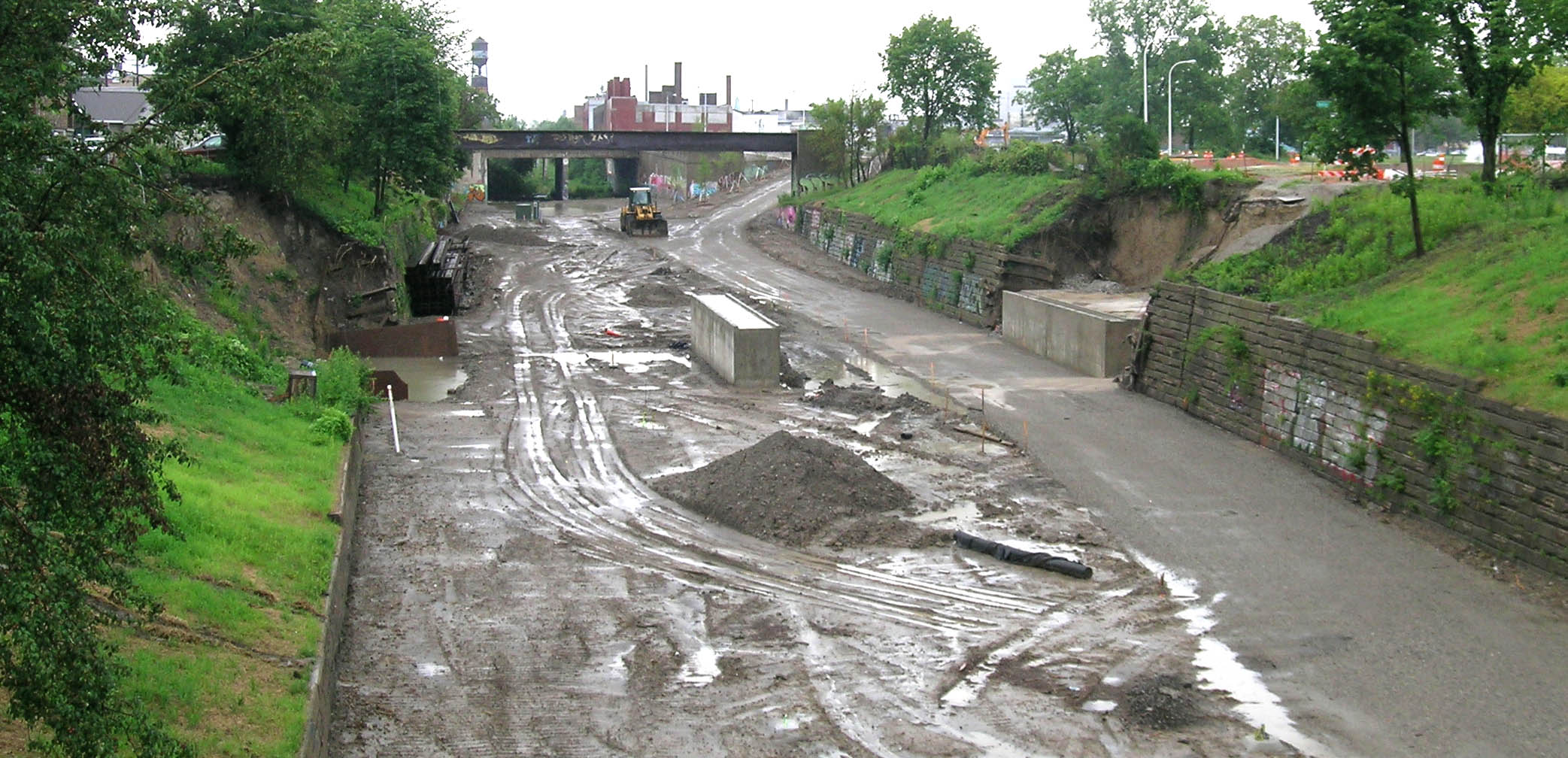- Antietam Street-Grand Trunk Railroad
Infobox_nrhp | name =Antietam Street-Grand Trunk Railroad
nrhp_type =

caption = Site of Antietam Street bridge after demolition.
location=Detroit, Michigan
lat_degrees = 42
lat_minutes = 20
lat_seconds = 43
lat_direction = N
long_degrees = 83
long_minutes = 2
long_seconds = 5
long_direction = W
locmapin = Michigan
area =
built =1930
architect= Grand Trunk Railroad
architecture= Other
added =February 18 ,2000
governing_body = Local
mpsub=Highway Bridges of Michigan MPS
refnum=00000114cite web|url=http://www.nr.nps.gov/|title=National Register Information System|date=2008-04-15|work=National Register of Historic Places|publisher=National Park Service]The Antietam Street-Grand Trunk Railroad Bridge was located where Antietam Street passed over the Dequindre Cut (used by the Grand Trunk Railroad) in
Detroit ,Michigan . It has been demolished due to structural deficiencies and will be reconstructed. [http://www.semcog.org/Data/Apps/project.report.cfm?type=RTP&id=1627 Report for RTP project ID 1627,] Southeast Michigan Council of Governments]History
By the 1920s, there were over 400 industries operating on Detroit's east side. However, the combination of the city's haphazard streetplan, the expansion of large factories, and the substantial network of rail tracks conspired to slow traffic within the city, particularly in the east-west direction. [http://www.michigan.gov/mdot/0,1607,7-151-9620_11154_11188-29375--,00.html Antietam / Grand Trunk Railroad,] Michigan Department of Transportation] In 1923, the city of Detroit and Grand Trunk railroad began a plan to build 22 grade separations; both parties agreed to share the cost.
One of the tracks to be regraded was the line paralleling St. Aubin. These tracks ran from the northwest, where they connected with a network of other lines, to the southeast, where the tracks turned to parallel the river and supplied a number of large factories, including the Detroit-Michigan Stove Plant, the United States Rubber Company Plant, and the Parke-Davis Laboratories. The tracks terminated at the Brush Street Depot in downtown Detroit.
By March 1930, sixteen of the crossings of what now is known as the "
Dequindre Cut " were finished, including the nearbyChestnut Street-Grand Trunk Railroad bridge [http://www.michigan.gov/mdot/0,1607,7-151-9620_11154_11188-29422--,00.html Chestnut / Grand Trunk Railroad,] Michigan Department of Transportation] . The bridge at Antietam Street was completed soon thereafter. In 1964, the Antietam Street Bridge and the Chestnut Street Bridge were teamed as a one-way pair. In the 1980s, the railway was abandoned, [http://www.modeldmedia.com/features/dequindre.aspx Walter Wasacz,] "Dequindre Cut: The Missing Link," Model D] and ownership changed hands. [http://www.railtrails.org/resources/documents/resource_docs/Detroit_Plan.pdf Trail Development Assistance Response Team,] GreenWays Initiative: Planning for Detroit's Rail-Trails. Abandoned Rail Corridor Inventory and Assessment, Final Report, October 2002, pp. 25-30]As of 2008, the Dequindre Cut is being turned into a rail trail.
Significance
The Dequindre Cut is in good condition, and the course of the Cut and how it relates to the street grid is apparent from the Antietam Street bridge. The bridge is good evidence of the grade separation effort early in the twentieth century.
However, as of 2008, the bridge has been demolished due to structural deficiencies and will be reconstructed. [http://www.semcog.org/Data/Apps/project.report.cfm?type=RTP&id=1627 Report for RTP project ID 1627,] Southeast Michigan Council of Governments]
References
Wikimedia Foundation. 2010.
